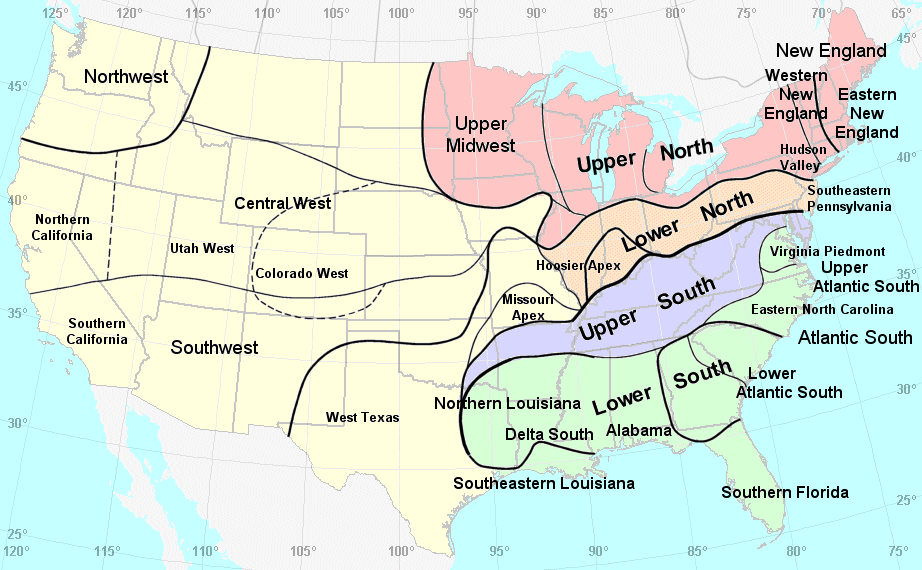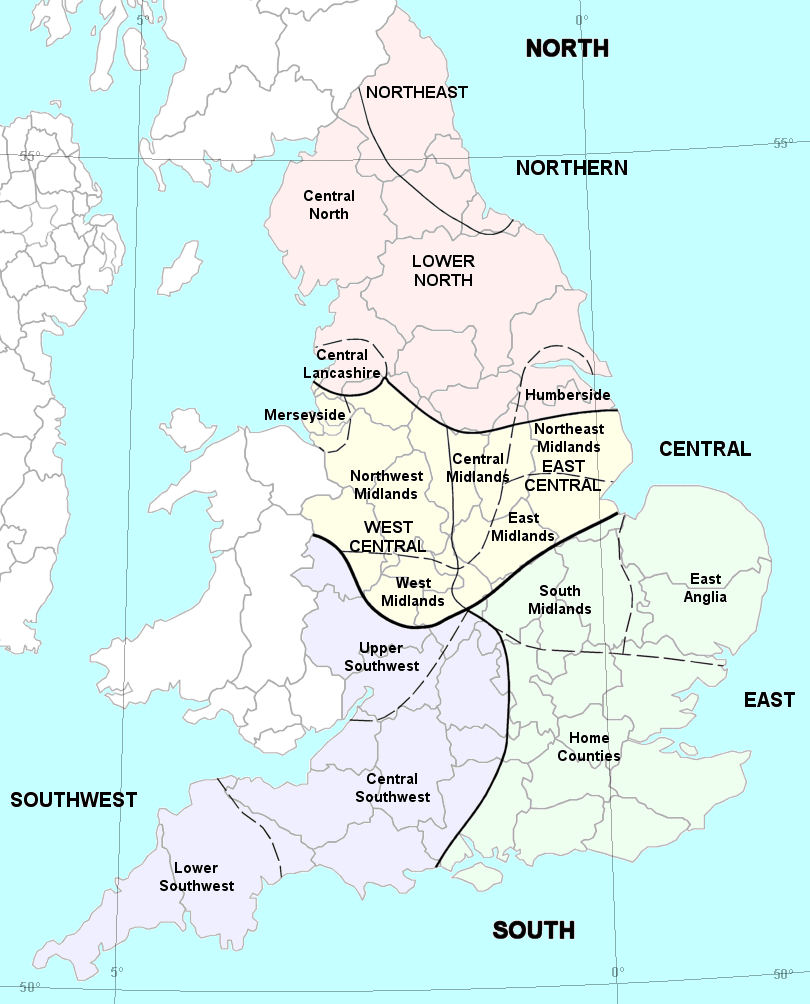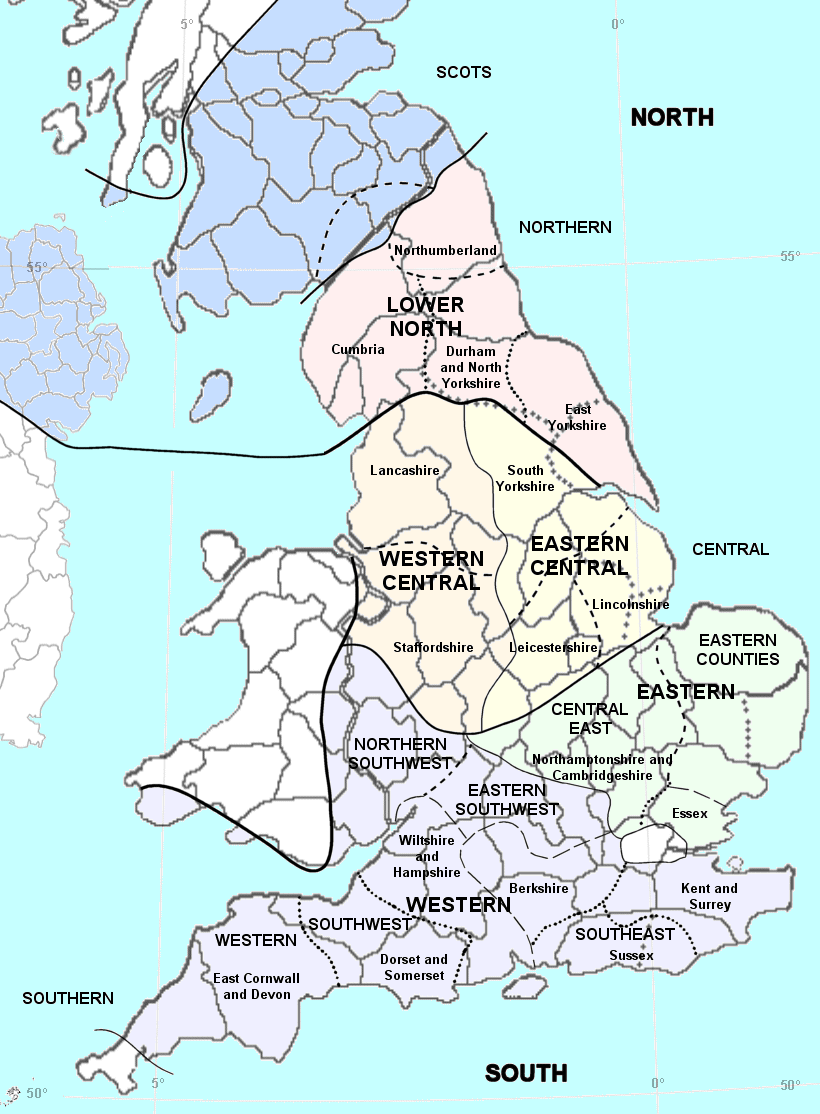



| Tourist: | Is it Hawaii or Havaii? |
| Benny Hill: | Havaii. |
| Tourist: | Thank you. |
| Benny Hill: | You’re velcome! |
Generally, people speak English with an English accent, and their own regional dialect with the accent of that region – so for instance a Southerner will normally speak with a Southern accent. Accents generally go along with dialects, and so dialect regions generally reflect differing accent regions. But not necessarily. An English person fairly fluent in Spanish or French will speak it with an English accent. An immigrant may speak a good local dialect but in his own accent. Having lived in the States a few decades, I speak American with a British accent – the grammar and vocabulary are mostly American but the pronunciation stuck (along with my driving style).
The next section, Pronunciation, goes into details about each vowel and consonant that sound noticeably different between American and British accents.
Dialects [ Hear some English dialects ]
Craig M. Carver shows about two dozen dialect regions in the US, based mainly on vocabulary, in his American Regional Dialects. His dialect map and family tree have been reproduced below. Peter Trudgill, in his Dialects of England, shows sixteen modern dialect regions in England, based on grammar, vocabulary, and accent (there are more in Wales, Scotland and Ireland), also reproduced below. Trudgill, in International English, breaks the US into 8 accent areas, and these coincide well with Carver’s delineations.
In both cases there are areas that differ markedly (e.g. North/South in England, Upper North, Lower North, and South in the Eastern United States) and within these areas are discernible subregions. Carver’s family tree indicates that the west dialect was derived from the northern dialects, and not the southern.
Carver and Trudgill both stress that dialect regions are merely convenient representations of a language continuum, where language differences grow the farther apart they are, especially across the more distinct boundaries. Studies show that 99% of American is used in pretty much the same way, the remainder flavoring the different regions. The interregional differences in England run much deeper despite its small size, since it has developed over a period about four times as long, and had significant input from other languages (Latin, Norse with the Viking invasions, French with the Norman invasion, and more Latin and Greek with the industrial and scientific revolutions). It is for these reasons that Trudgill highlights traditional dialect areas in England (also reproduced below), which are apparent more in rural and remote areas, and these belie their origins in the Saxon and Norse kingdoms of yore.
Are American and British converging or diverging? By any measure, the difference is greater than 1% and growing. As dialects diverge, they start out mutually intelligible (like American and British), then intelligible with difficulty (like Welsh and Breton), and finally unintelligible (like English and Old English or English and Dutch). However, unlike in the past, today’s global communication will probably change, in some unknowable way, the relationship between American and British.




| Last updated 1 January 1970 |

| © Jeremy Smith 2024 |